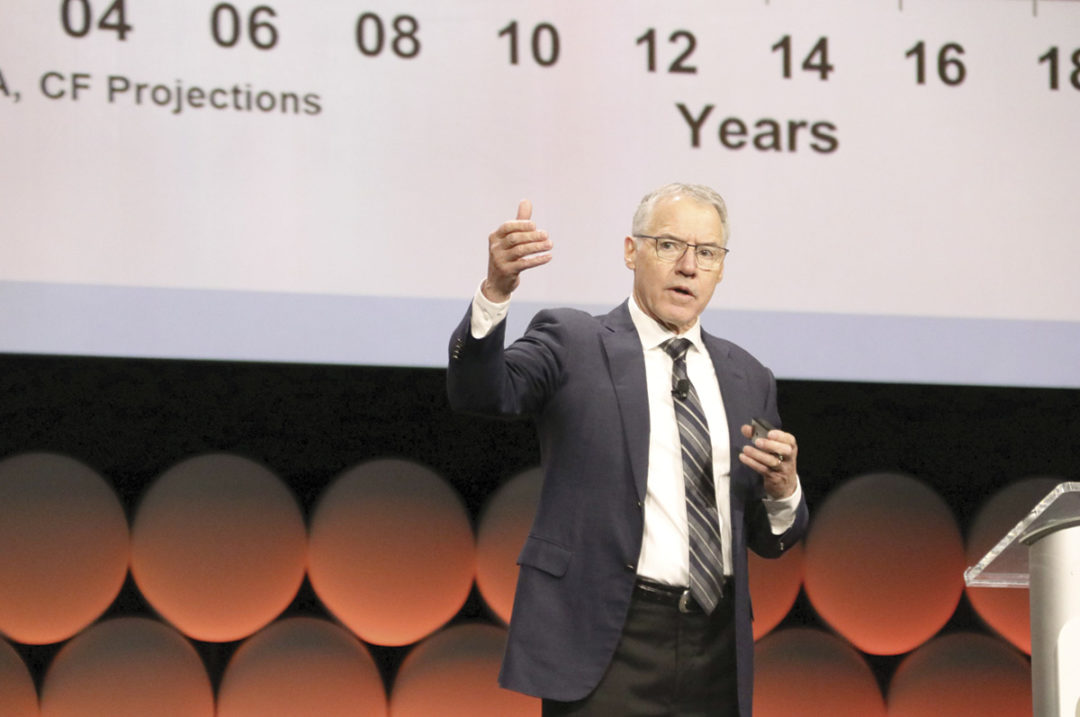Few times in history has the cattle industry offered more opportunity for profit to conscientious producers than right now. That was the primary message of CattleFax CEO Randy Blach’s executive summary at CattleFax’s Industry Outlook Seminar on Feb. 2. Despite high interest rates, lingering drought in much of the country, big market swings and continued high input prices, beef demand has proven to be resilient, which Blach believes is largely a result of the improving business acumen of modern cattlemen and women, and their ability to consistently produce more high-quality beef than at any point in history.
Demand for U.S. beef, Blach said, is growing faster than the inflation rate. About 84% of the beef produced in the country over the past several years has graded Choice or Prime – a remarkable feat that producers a generation ago would likely have thought all but unachievable. Additionally, 2023 saw a record Choice-Select price spread, indicating more high-Choice beef than ever before.
“Consumers love the taste of high-quality, grain-fed beef. That’s our niche on the planet, and we have to stay focused on that,” said Blach. “All of the demand growth has been at upper-two-thirds Choice and Prime. … The signal is clear, and I commend each of you who is dedicated to producing more of the good stuff.”
Of course, not all is rosy in cow country, starting with the smallest national cow herd inventory in a half-century, which will inevitably lead to complications throughout the supply chain in the coming months and years.
“There aren’t going to be enough feeder calves available to keep all these feedlots and packing plants full over the next two to three years,” Blach said. “You may not have enough to fill your grazing lots. … I think you’ll really start to see that pinch in the second half of this year and going into 2025.”
He said the supply issue, coupled with policy uncertainty in this election year, could lead to more wild market swings such as those seen in the fall of 2023. Despite the still-shrinking herd, there’s been very little movement toward heifer retention, and Blach expects the current cattle cycle to be much slower and prolonged compared to the last one, when the national cow herd climbed from its nadir in 2014 until it began declining again at the end of 2019.
“We’re going to see some pretty stout prices, but they won’t stay there forever,” he said. “This is real [market] volatility, and it’s here to stay. We’re going to continue to see markets swing. These create opportunities, but they also create risk.”
Blach advised producers to mitigate these risks by utilizing tools like Livestock Risk Protection (LRP). He also said that the rise in differentiated beef products – such as grass-fed, grass-finished and non-hormone-treated cattle (NHTC) – offer more opportunities for producers to profit on their unique operations and make beef less of a commodity, which he said is paying dividends for the industry as a whole.
Blach concluded by once more driving home the point that every sector of the cattle industry is profitable right now. Cow-calf producers are currently getting the highest percentage of the industry’s total value, which should start driving heifer retention and herd expansion.
“We’re doing a lot of things right in the industry,” he said. “You’re making a lot of right decisions as producers.”









